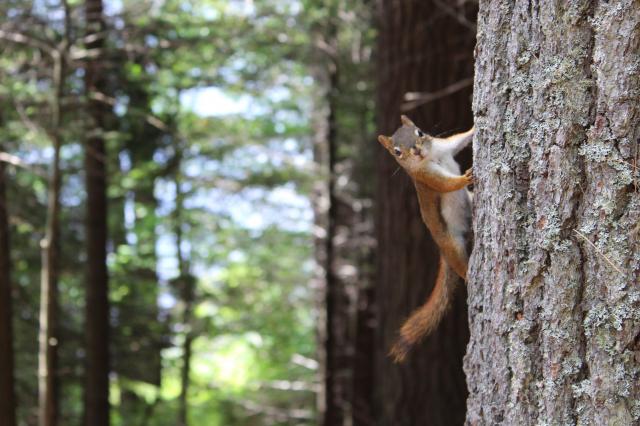About This Lesson
There are many types of rodents in North America. However, here are the most well-known rodents that you are likely to see in the wild.
Beaver
The beaver is one of the largest rodents on the continent. Beavers are especially unique because they thrive in water, and one of their hallmark traits is constructing massive underwater dams with detailed designs. Dams are most often made up of branches, sticks and mud and can hold a large number of beavers at a time. Beavers have fur that is designed to be more water resistant, and as a result has a more oily texture. Beavers are also known to swim underneath frozen rivers during the winter months and still remain extremely active. Most surprisingly, beavers can be extremely heavy relative to their size, and can weigh up to sixty pounds.
Deer Mouse
The deer mouse is a smaller rodent with a light and dark tail. They can be potentially problematic as they like to infect homes. Deer mice are most commonly spotted in both the western region of the United States, as well as the Great Lakes region and even some parts of New England. The most dangerous risk when it comes to deer mice is that they are active carriers of hantavirus, which is most easily transmitted through deer mice droppings. Deer mice will shelter in buildings when the temperature gets colder during the winter months. If you happen to spot mouse droppings in your home, make sure to check for deer mice and be careful of contracting hantavirus as well.
Gopher
The gopher is a creature that resides primarily underground in tunnels. They are about half a foot in length, on average, and can create thousands of tunnels below the surface of the earth. Gophers mainly diet on several types of grass, as well as dandelions, and often use their cheek pouches to easily transport their food to designated storage areas within their tunnel systems. Some physical features of gophers, including large teeth as well as large claws, are beneficial for digging and creating underground habitats. Overall, gophers are physically designed to best inhabit their lives underground. The mounds that gophers create can actually provide soil aeration, and often contribute to the health of plants
Chipmunk
With over two dozen species, chipmunks are one of the most diverse types of rodents residing on the North American continent. Like the gopher, chipmunks also have large underground tunnel systems. They have also adapted to their many predators by having a wide variety of food resources. They are omnivores and will consume anything from nuts to lizards. They are also known to hibernate for long periods of time during the autumn and winter months, but unlike bears and other creatures, they do not hibernate continuously. The chipmunk is also a generally solitary creature, with the exception of breeding, and they can be very territorial as well.
Squirrel
Squirrels are another rodent that have a large amount of species and variations. Because of this, they can range greatly in size and color. Being extremely adaptable animals, squirrels have been seen on every continent with the exception of both Antarctica and Australia. Also similar to chipmunks, squirrels hoard and bury food stores in preparation for the hibernation months during the general period of October to April. Their teeth are always growing due to the way they consume nuts and other foods that can potentially wear their teeth down. Additionally, they can jump from a height of up to twenty feet and can reach speeds of twenty miles per hour when running.
The North American content is home to a wide variety of rodents of all sizes and species, ranging from water-based habitats to burrowing deep underground. With these helpful explanations, it should be easy to identify what kind of rodent you see, whether you spot it on a hiking trail with your family, or even in your own backyard.












